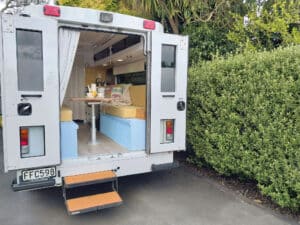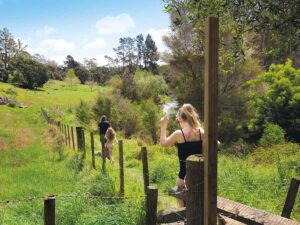Touring in a caravan is an easy, accessible and fun way to explore and adventure in our fantastic country. For many, caravans are a low-cost alternative to motorhomes that allow you to jump into the on-road lifestyle whenever the timing suits.
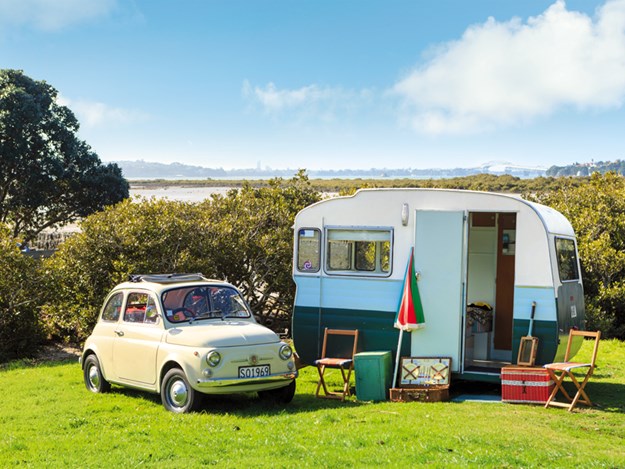
In other words, you don’t have to wait until retirement. When it comes to deciding where to camp in your caravan, there are many options out there, including, but not limited to, self-contained freedom camping.
It pays to be aware though, that not all caravans are well-equipped for freedom camping or self-contained camping. So depending on your budget, you may need to consider other options.
Tips for self-contained camping
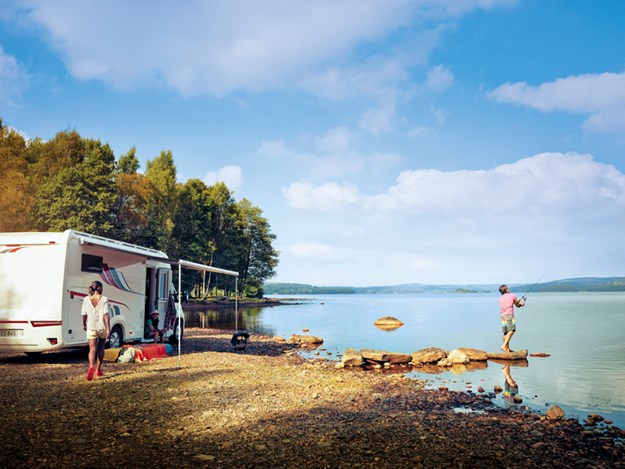
- You’ll need at least 12 litres of water per person (or berth) for three days. For example, if your caravan is a four berth, it’ll need 48 litres of fresh water to be eligible for self-containment. It will also need a sink connected to a sealed wastewater tank (most new caravans will come standard with this).
- Grey/black wastewater tank: 4 litres per person per day (12 litres per person minimum, vented and monitored if capacity is less than the fresh water tank).
- Evacuation hose: (3m for fitted tanks) or long enough to connect to a sealed portable tank
- Sealable refuse container (rubbish bin with a lid)
- Toilet (portable or fixed): Minimum capacity 1 litre per person per day (3-litre net holding tank capacity per person minimum)
For more information about self-containment criteria, visit nzmca.org.nz.
Now that we’ve looked at what it takes to ensure your caravan is self-contained and ready for the road, it’s time to think about where you can freedom camp.
Responsible self-contained camping
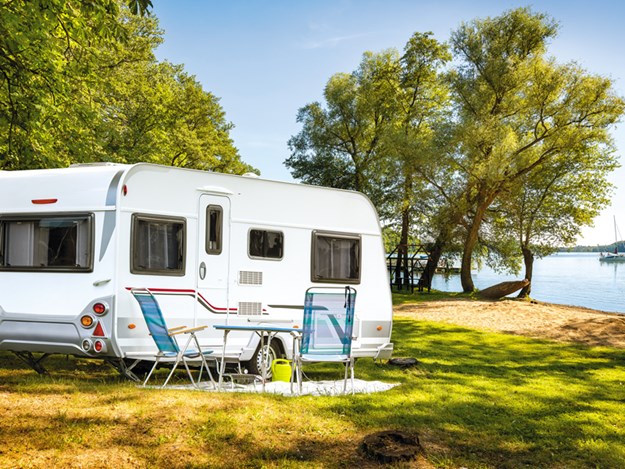
Freedom camping certainly doesn’t mean roughing it, but rather parking up in fantastic locations in a caravan that is well equipped to do so. You’ll need everything on board to accommodate yourself and your passengers all while practising a ‘leave nothing but footprints’ mentality.
Many caravans are built specifically for this type of camping, so it pays to find one that has been designed with the above specification in mind, rather than one that has been retrofitted. There are over 500 freedom camping locations in New Zealand, some of them among the country’s most scenic and popular destinations.
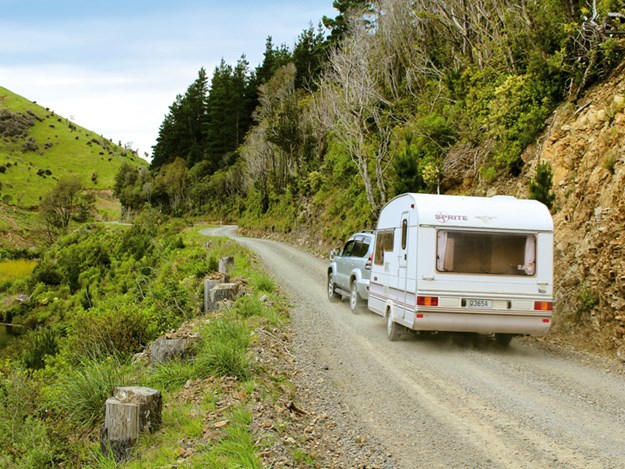 |
It pays to check ahead that the road you’ll travel is suitable for a caravan |
However, some self-contained camping locations may not be that accessible for a caravan, and some gravel roads do discourage caravans from entering so keep that in mind when planning your journey. A good resource for all things related to freedom camping is freedomcamping.org.
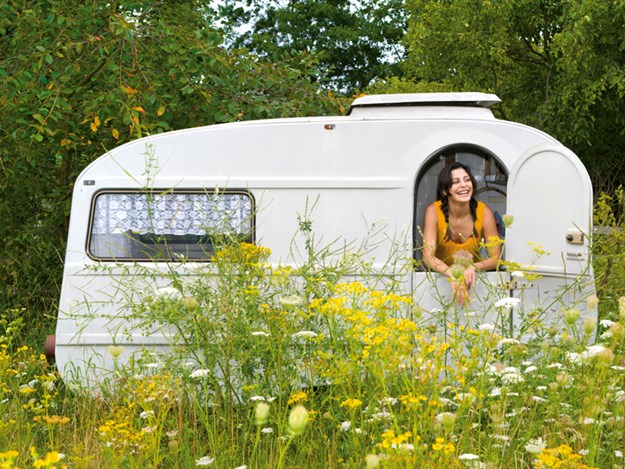 |
Kiwis have had a long long affair with caravans |
Campsites
Campsites are great for people looking to plug in, charge devices, grab a more spacious shower (especially for those who have combined bathrooms) and meet other like-minded people. There are thousands of campsites around the country that are well-appointed, in excellent scenic locations and which are usually quite spacious.
You also do not need a caravan with self-containment capacity to be in a campsite, nor does it matter too much about separate toilets and showers or even usable kitchens as you can take advantage of the campsite facilities. Campsites are an excellent place for families, and many love the transition from the ‘tenting years’ to the ease and weatherproof nature of a caravan.
Permanent sites
One of the appealing parts about caravans, and why so many turn to them, is that they can be permanently sited at some of the country’s best and most sought-after holiday destinations for a fraction of the price of a bach. Think Orewa, the Coromandel, Whangamata, or Queenstown.
You’ll have your own little patch of beachfront paradise that you can return to for weekends or school holidays or whenever your heart desires. No need to pack or unpack the caravan when you arrive; just unlock the door, kick off your shoes and enjoy. It’s all parked up waiting for you.
Park Over Properties
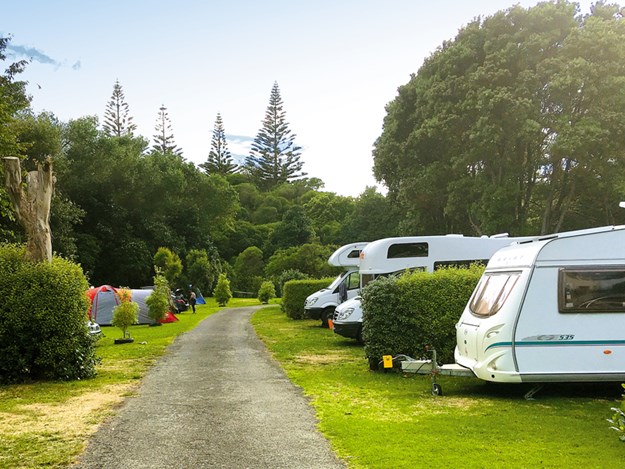 |
Paekakariki Holiday Park |
Since 1991 the NZMCA has been building up a list of park over properties (POPs) for their members to enjoy at minimal or no cost. They have more than 2000 parking sites available, and while these do include public sites, they have a large number of spots reserved specifically for NZMCA members, including business premises and residential locations. The NZMCA is continually acquiring new locations for the POP scheme and have them dotted throughout the country.
DOC Campsites
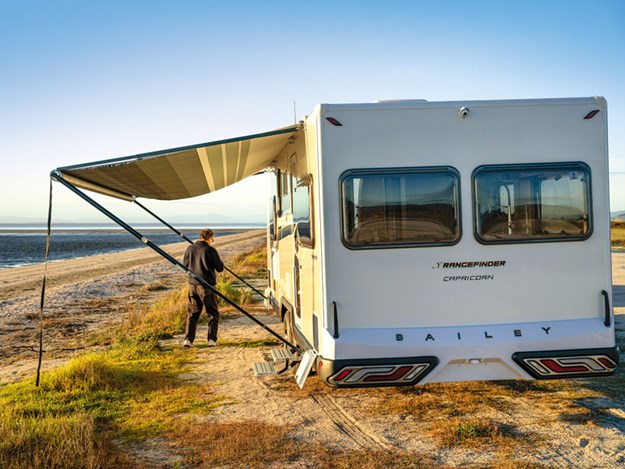
Throughout New Zealand, the Department of Conservation (DOC) has over 160 caravan-suitable campsites on public conservation land. You can even search on the DOC website for sites that are specifically accessible for caravans.
This means you don’t have to worry about finding a place that will be long enough to accommodate you and your tow vehicle once you arrive. Most are on a first-come first-served basis, while the serviced campsites can be booked in advance.
With the first-in first-served model, payment is made through self-registration and the fees are usually around $5-$15pp. You’ll need to put your money in an honesty box and display the ticket you get when doing so on the dashboard of your motorhome. Make sure you remember to take cash!
On your section
Caravans also offer great overflow accommodation during the busy summer season or for teenagers who need their own space, but can’t quiteafford to rent. Some people even use them as little private getaways down the back of the farm or as an Airbnb to earn a little extra income.

